Further Media
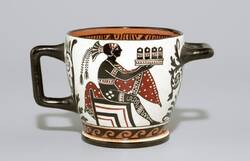
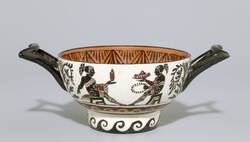
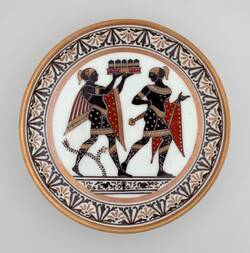
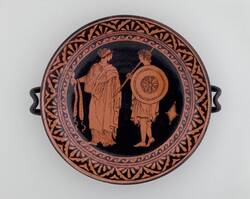
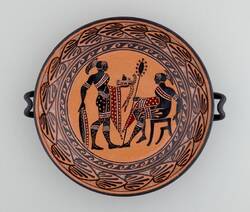

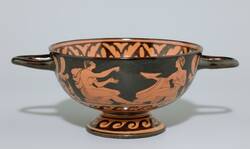
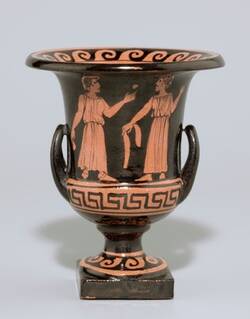

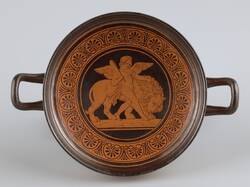
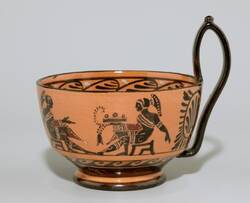

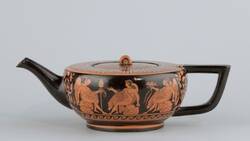
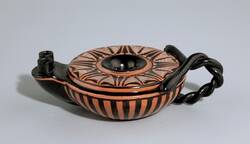
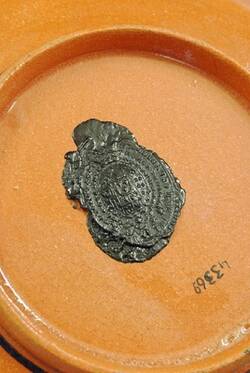
The objects assembled in this display case provide a representative sample of the wide variety of wares with which the famous Neapolitan ceramic manufacturer Giustiniani supplied travellers to Italy, enthusiastic about antiquities, in the first half of the nineteenth century. On display are plates, cups and bowls as well as cult vessels, most of which are painted in black and reddish brown with mythological scenes or ornaments.
The manufactory originated with Nicola Giustiniani (1736-1815), scion of a dynasty active in the production of ceramics in Campania that can be traced back to the sixteenth century. His entrepreneurial spirit and inventiveness, which earned him the nickname “belpensiero”, can be compared to that of Josaiah Wedgewood, who was about the same age. Both recognised the potential of the culture of antiquity for the decorative arts. In Giustiniani’s case, the archaeological excavations in the nearby towns of Pompeii and Herculaneum were of particular significance. The ancient vases found there, especially those in the possession of the British diplomat Sir William Hamilton, aroused interest throughout Europe - not least because of the richly illustrated publications in which they were featured.
Biagio Giustiniani, who continued the fortunes of the company after the death of his grandfather, moved the production to the Via Marina in Naples and concentrated on the manufacture of ceramics modelled on Pompeian finds. At its peak, his manufactory could certainly compete with that of the famous porcelain of Capodimonte. After Biagio’s death, however, a gradual decline began that ultimately resulted in a series of bankruptcies. The company headquarters, the façade of which he had decorated with Egyptian reliefs, was lost in the bombing of Naples during the Second World War.
The objects exhibited here date from the heyday of the manufactory. They all bear the black seal of Ferdinand II with the coat of arms of both Sicilies, which allow for them to be dated between 1830 and 1859, the reign of the king. In addition, there is the signature of the commission responsible for antiquities and fine arts, confirming the quality of the goods exported. The registration of the inventory number of the collection is owed to Gustav Friedrich Klemm (1802-1867), who had travelled through Italy, including Naples, together with Prince Johann of Saxony. It is assumed that the objects were acquired during this trip, possibly even as a diplomatic gift. The connections between Dresden and Naples were very close since the marriage between Maria Amalia of Saxony and Charles III of Spain. During this time, Johann Joachim Winckelmann kept the Saxon court informed about the excavations in Pompeii and Herculaneum.
Text: Alexander Röstel